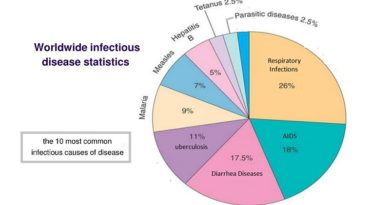The Basics of Haemophilus Influenzae
Knowing the basics of Haemophilus influenzae helps us understand it and its impact on our health. It is a bacterial species that commonly colonizes the upper respiratory tract in humans. Despite its name, it is not the causative agent of influenza, which is a viral infection. It causes different infections including Acute Otitis Media (AOM), Sinusitis, Pneumonia, Meningitis, and Epiglottitis.
In this article, we will explore the taxonomy of Haemophilus influenzae, its morphology, structure, variants, and serotypes.
A. Taxonomy and Classification
Haemophilus influenzae belongs to the kingdom Bacteria, phylum Proteobacteria, class Gammaproteobacteria, order Pasteurellales, family Pasteurellaceae, and genus Haemophilus. It is a small, pleomorphic, non-motile, Gram-negative bacterium.
B. Morphology and Structure
Haemophilus influenzae is typically pleomorphic, meaning it can appear in different shapes. Under the microscope, it can appear as small coccobacilli or short rods. It lacks flagella and is non-spore forming.
The bacterium has an outer membrane that surrounds the cell wall. This outer membrane contains lipopolysaccharides (LPS) which contribute to its pathogenicity. It also contains various proteins, including adhesins that help the bacterium attach to host cells.
C. Variants and Serotypes
It is classified into different variants and serotypes based on the presence or absence of specific surface antigens. The two main variants are:
- Encapsulated (typeable) strains: These strains possess a polysaccharide capsule that surrounds the bacterial cell. The capsule which is an important virulence factor, enhances the bacterium’s ability to evade the immune system Encapsulated strains are further categorized into different serotypes based on the composition of their capsules. The most common serotypes associated with disease in humans are types a, b, c, d, e, and f.
- Non-encapsulated (non-typeable) strains: These strains lack a polysaccharide capsule and are not classified into serotypes. Non-encapsulated strains are considered less virulent than the encapsulated ones but can still cause infections, particularly in the respiratory tract.
Haemophilus influenzae type b (Hib), which is an encapsulated strain, was a major cause of invasive diseases such as meningitis, pneumonia, and septicemia in young children before the introduction of the Hib vaccine.
SUMMARY
Knowing the basics of Haemophilus influenzae is essential to understand its impact on our health and to manage conditions caused by it. Haemophilus influenzae is a Gram-negative bacterium that colonizes the upper respiratory tract of humans. Understanding its taxonomy, morphology, and variants is crucial in studying its pathogenicity and developing effective prevention and treatment strategies. While non-typeable strains are commonly found in the respiratory tract, encapsulated strains, especially Haemophilus influenzae type b (Hib), can cause severe invasive diseases. Ongoing research continues to enhance our knowledge of this bacterium and its impact on human health.
If you have questions you can drop them below in the comment section. You can contact us here: Google page – Helalmedical, or Facebook page. We offer quick and convenient testing options.




